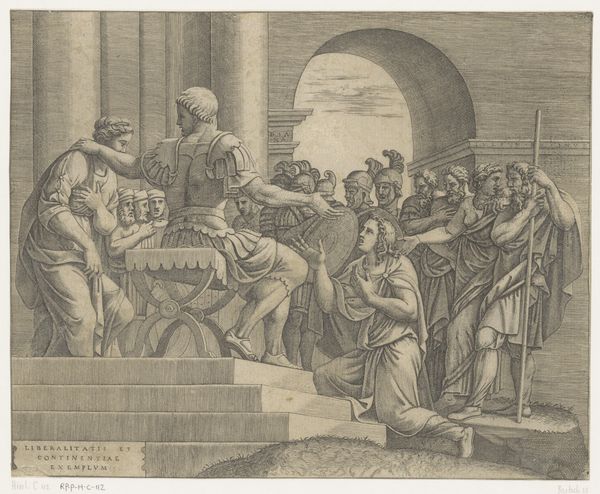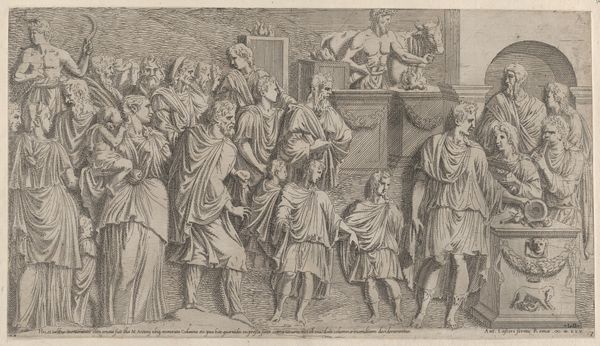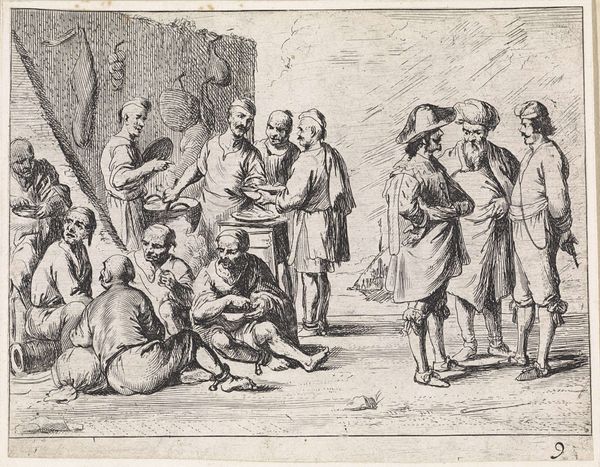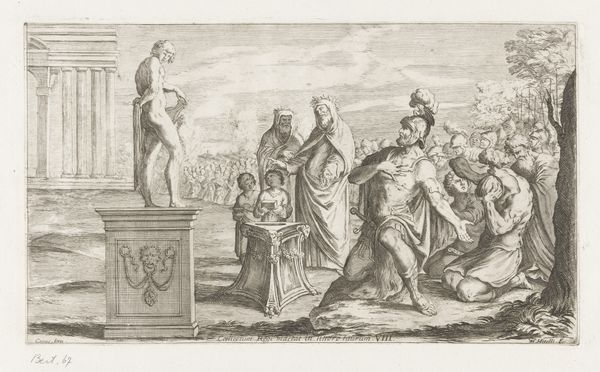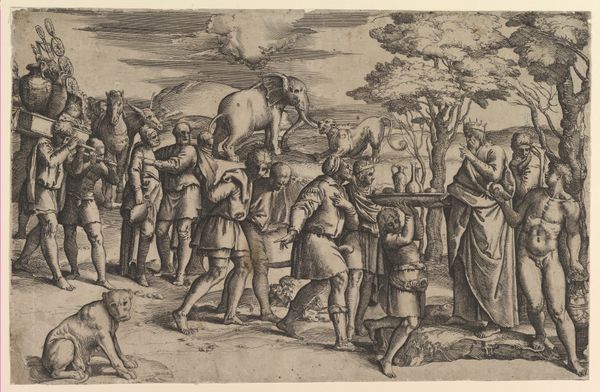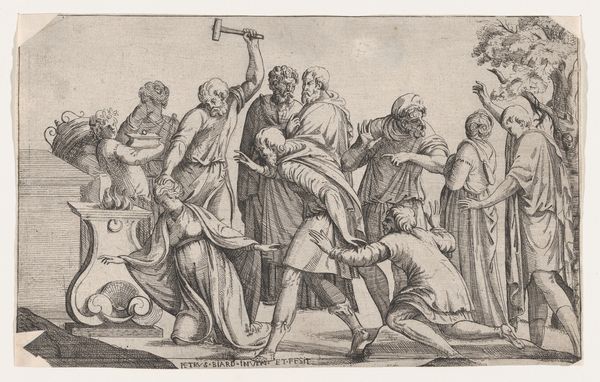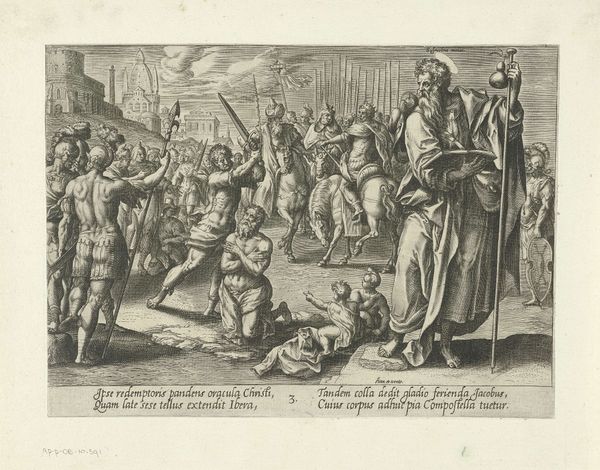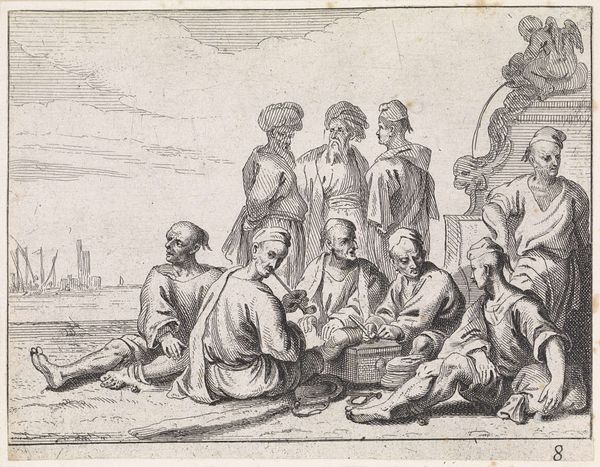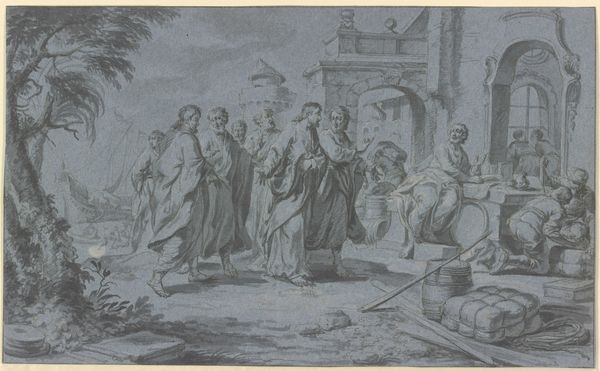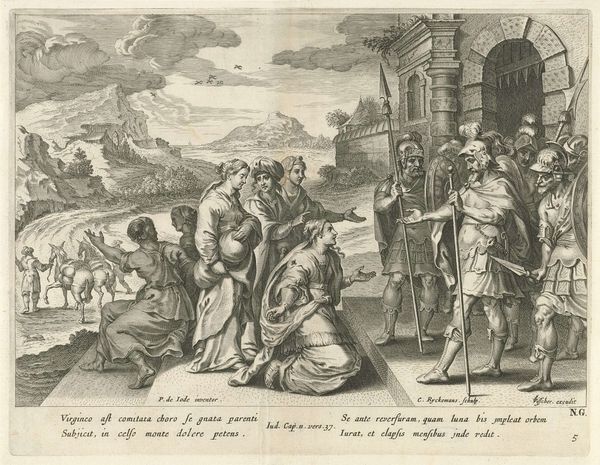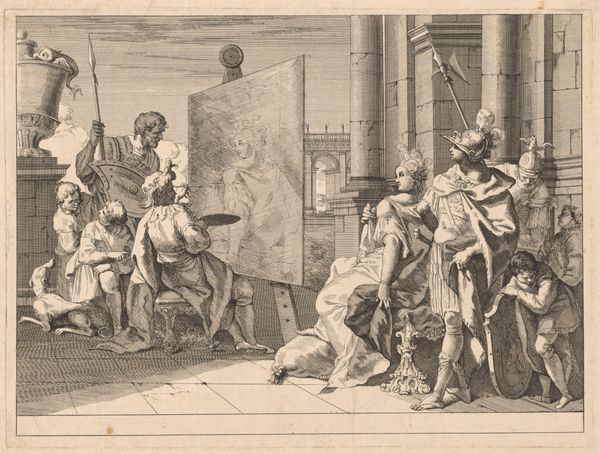
print, engraving
# print
#
mannerism
#
figuration
#
history-painting
#
engraving
Dimensions: height 225 mm, width 303 mm
Copyright: Rijks Museum: Open Domain
Editor: Here we have Diana Mantuana's "Straatverkoper met slangen," or "Street Vendor with Snakes," an engraving likely created between 1557 and 1612. It looks like a really dynamic composition with all these figures crowding together. What is your reading of this piece? Curator: The composition presents a clear hierarchy, doesn't it? Note how the vendor, elevated on a platform, becomes the focal point. His gestures are theatrical, his gaze fixed, almost commanding the space. Observe the linearity and clarity of the lines in the engraving. Do you notice how that contributes to the overall dramatic effect? Editor: Yes, the crisp lines definitely add to the drama. It’s also interesting how everyone is looking up at him, or reaching out, except for the figures at the very back. Does that mean something? Curator: Possibly. But from a purely formal perspective, this contrasting group in the background stabilizes the image by creating depth and visual containment. Notice also how the drapery is rendered with intricate folds. How does this affect your viewing? Editor: I see it! The drapery gives a sense of movement and also contributes to a kind of...stylishness, maybe? Curator: Precisely! Mantuana employs these aesthetic strategies – dramatic composition, meticulous line work, elegant figuration – to create an engaging visual experience for the viewer. Editor: So by looking at these elements like the lines, composition, and the rendering of the figures, we can start to unpack the artist's intentions? Curator: Indeed. The artist makes deliberate choices about these formal elements to communicate and engage the viewer in complex ways. Consider also, finally, the contrast between the controlled space on the lower-left versus the much looser organization towards the vendor, and how it reinforces his presence. Editor: This makes me realize how much can be understood just by carefully examining an artwork’s composition. Thanks! Curator: My pleasure. Visual literacy invites us to consider art history by focusing primarily on form and composition.
Comments
No comments
Be the first to comment and join the conversation on the ultimate creative platform.
